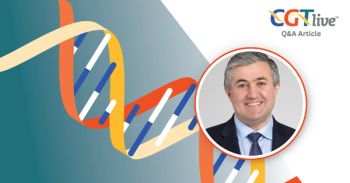
Red Blood Cell Function May Be a Potential New Approach for Assessing the Effect of Sickle Cell Treatments
Tami John, MD, a clinical associate professor at Stanford Medicine, discussed a study on samples from patients who had received either HSCT or gene therapy for sickle cell disease.
Although allogenic hematopoietic stem cell transplantation and some gene therapies are generally considered potentially “curative” options for sickle cell disease, debate remains among experts about what the definition of a “cure” actually should be. Traditionally, a certain level of donor chimerism or a certain level of functional hemoglobin is used as a metric.
Tami John, MD, a clinical associate professor at Stanford Medicine, and her colleagues, however, are interested in exploring red blood cell function as a potential indicator of the effect of these treatment options. They conducted a study assessing red blood cell function in samples from patients who had received either HSCT or gene therapy for sickle cell disease, and presented their findings at
CGTLive: What was the rationale behind this research?
Tami John, MD: For a few years we've actually been looking at red blood cell function. I've worked with the Sheehan Lab as the senior author on the abstract. I had a question coming in very early on with a patient with mixed donor chimerism—so they had a good percentage of their posttransplant blood derived from the patient (the recipient) and they'd lost their donor engraftment. I was trying to understand what that looks like from a red blood cell perspective. We typically think that you can have mixed chimerism after transplant and ‘cure’—or at least very much transform—sickle cell disease. I wanted to see if that was true, especially in this particular situation.
And so we were able to collect a good amount of sample from people after stem cell transplant, as well as a couple of individuals after gene therapy, and look at their red blood cell function. For the most part, we do see that their red blood cell function normalizes and reflects their donor, but there was a population of patients that do still have some abnormalities despite having significant donor chimerism. Trying to understand what that means I think is the next step. We don't fully understand, if you have some slight red blood cell abnormalities, what that means when patients clinically really don't have evidence of their sickle cell disease.
Did you observe any trends in the data?
The numbers are still pretty small, especially for gene therapy. I do think this is going to be a potential test that's most interesting after gene therapies, as well as maybe after reduced intensity transplants for sickle cell disease where we know we have risk for that partial or mixed donor engraftment or mixed gene modification engraftment. I do think it will be quite interesting to see if there is a population of cells that remains that do sickle and that maybe do change the overall function of the red blood cells in a whole blood population... If there are subpopulations that maybe are abnormal, what percentage of the whole blood is abnormal? So there are things in the future to look at, but probably for the gene therapies and for the reduced intensity conditioning therapies for sickle cell this may be an interesting approach to understand how good of engraftment or how much donor versus recipient sickleable cells remain.
Are there any other surprising findings from the study that you want to share?
In a subset of patients, it was surprising to see that even after transplant with a very good percentage of donor myeloid chimerism, there are still some red blood cell abnormalities: some in the red blood cell density, some in the bottom point of potential sickleing (elongation index minimum), despite having either a donor who has no sickle cell trait (HbAA), or with HbAS, but is still out of the norm for what we see for those patients. Again, what does it mean? We don't know, but it is interesting to see that there is a subpopulation that still has some abnormalities despite having what clinically looks like stabilization of their sickle cell disease.
Is the lab planning to do further research?
At least I think in the gene therapy perspective, there are plans to look with some of the companies that have active clinical trials to see if we can maybe compare across gene therapies.
This transcript has been edited for clarity.
REFERENCES
1. Patel AP, Kanne CK, Stenger EO, John TD, Sheehan VA. Red cell rheology and blood viscosity in pediatric individuals having received allogenic hematopoietic stem cell transplantation or ex vivo autologous gene therapy for sickle cell disease. Presented at: ASH 2023 Annual Meeting & Exposition. December 9-12; San Diego, CA. Abstract #1076
Newsletter
Stay at the forefront of cutting-edge science with CGT—your direct line to expert insights, breakthrough data, and real-time coverage of the latest advancements in cell and gene therapy.





































